In a few weeks, a good friend of mine is taking his wife and kids and moving to Paris for work. Lindsay and I have decided to throw them a going away party. We were on a quest to fund something fun to serve, and we came across this terrific book: Punch, which is where we got this recipe.
Part of the book is a history lesson on the invention, evolution, and role of punch through to its decline in the late 19th century. Part of it is about general techniques for making punch. The rest of it is punch recipes for any occasion. Since my friends are moving to France, we wanted to make a Champagne punch.
The problem is that when you read the recipe, it doesn’t sound all that appealing. We were really taking it on faith that mixing wine, tea, hard liquor and Champagne would result in something drinkable.
Actually, we didn’t taking it on faith. Before making a full party-sized bowl and spending an ungodly amount of money on alcohol, we made a smaller trial batch and had a few friends over to test. Since it was a more leisurely day than the party will be, we decided to take pictures.
Sure, it has nothing to do with cooking techniques or seasonal eating, but it does seem to fit in because it’s such a throwback. We strive to eat foods that were grown and raised in the same manner that they were prior to industrialized agriculture. Why not try to party the way people did in the 18th and 19th centuries?
The results were actually pretty spectacular. The punch was tasty, but light and fizzy, and it packed a punch.
Lindsay bought a real punch bowl for cheap on Etsy that came with 12 tiny glasses. That’s the best thing about punch: how social it is. The book talks about how punch declined in the face of the individualized and personalized cocktail. Isn’t that the nature of modern society? The individual over the community?
With punch, everyone is drinking the same thing, from small glasses, and inevitably everyone mixes around the punch bowl. It’s fun. We would definitely recommend it for any party, especially if you are hosting, since it’s one of those great “you can do it all before the party” tricks that allows you to enjoy yourself.
Daniel Webster’s Punch
This recipe is scaled for our smaller “test bowl”. As written in the book, everything is doubled, except for the Champagne. We intended to use only half the bottle, but then we realized it was best to just use it up anyway and keep the bowl topped off with bubbles.
Ingredients:
- 6 Lemons
- 1 cup of raw sugar (e.g., turbinado or demerara)
- 2 tea bags of black tea (e.g., Earl Grey)
- 1 pineapple-worth of 1/2 inch pineapple rings
- 1 pint of cored strawberries
- 375 ml (one small bottle) of cognac
- 375 ml (one small bottle) of dark Jamaican rum
- 375 ml (one half of a 750 ml bottle) of oloroso (cream) sherry
- 750 ml (one bottle) of Bordeaux or similar red wine
- 750 ml (one bottle) of Champagne or sparkling white wine
Directions:
- Carefully peel each lemon. It’s best if you can manage to peel each one in a single, long spiral. Try to leave as much of the white pith on the lemon as possible and remove just the yellow of the peel.
- Place the peels in a glass bowl and pour in the sugar. Use a wooden spoon to thoroughly mash the sugar into the peels. Mix and repeat, mix and repeat for at least 5 minutes. You want to thoroughly macerate the peels with the sugar to draw the lemon oil out into the sugar. When you are done (when you get tired of doing it), set the bowl aside and let it sit for an hour.
- When the hour is almost up, bring some water to a boil and pour 1 cup of the boiling water into a cup or mug containing 2 bags of black tea, such as Earl Grey. Let it steep for 10 minutes, then remove the tea bags.
While the tea is steeping, juice enough of the peeled lemons to get 1 cup of fresh lemon juice. Strain the lemon juice to get rid of any pulp or seeds.
Once both of the above are done, pour the tea and lemon juice into the bowl with the sugared lemon peels. Stir with the wooden spoon until the sugar on the lemon peels completely dissolves into the liquid. Once there is no sugar visible, remove the peels with a pair of tongs and set aside.
This is why it is helpful to have peeled the lemons into single strips. If your peeling resulted in smaller pieces, you can either fish for them with the tongs or strain the mixture.
You can discard the lemon peels at this point, but Lindsay had the bright idea to make them into candied lemon peels (since they are half way there already). That will have to wait for another post, but check out the results below. We’ve .added them to cookies and eaten them straight-away as snacks. Brilliant re-use!
- Transfer the liquid to a glass bowl or jug that is large enough to hold all of the ingredients. This could be your final serving bowl if you like. Add all of the remaining ingredients except for the Champagne (cognac, rum, sherry, wine, and fruit). Cover and refrigerate for one hour.
- After the hour, transfer to your serving bowl. Add a large amount of ice (about the size of a softball or bowling ball). It would be smarter to put the ice in the bowl first and pour the punch over the ice, so that you don’t send drops of wine flying in every direction the way that I did. Top with half the bottle of Champagne. When the bowl is halfway down, top it off again with the other half of the bottle. Ladle into tiny glasses to serve.
- Watch the bowl go from full, to half-full, to empty in what seems like no time flat!

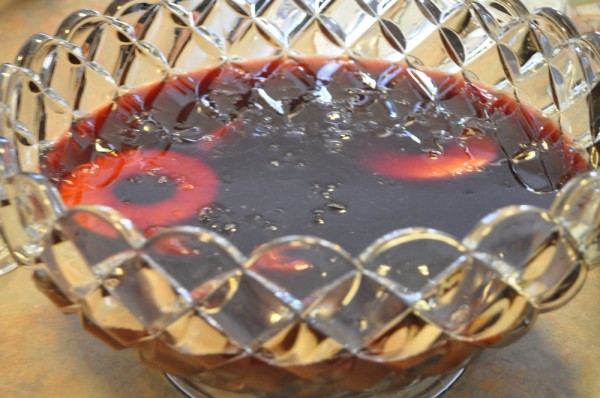
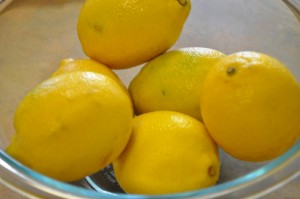
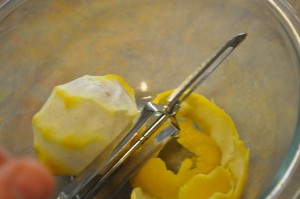
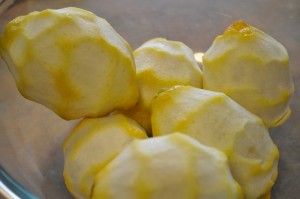
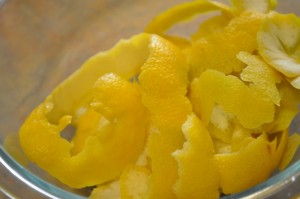
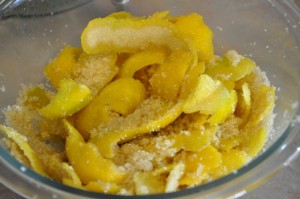
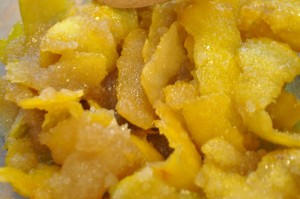
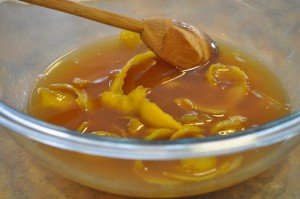

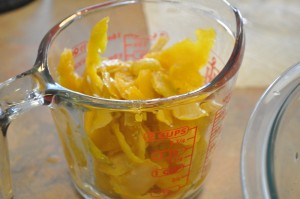
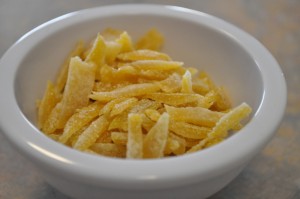
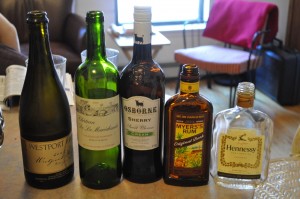
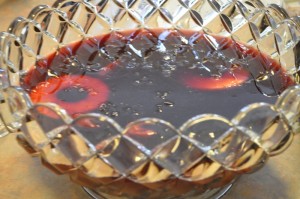

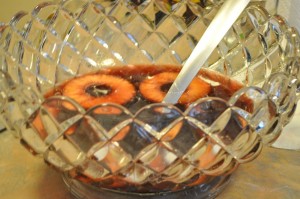

Awesome punch it was and will be! Smashing success, I say. And you two probably just started a new tradition, too.
[...] for some friends and needed to find a solid anchor for the menu, something that would stand up to the punch (and help our friends stand up to the punch). With the lousy weather we wanted something warm and [...]
[...] guessing the ingredients and drinking out of the tiny cups. Here’s a link to the post about our old fashioned punch, in case you want to liven up your holiday [...]